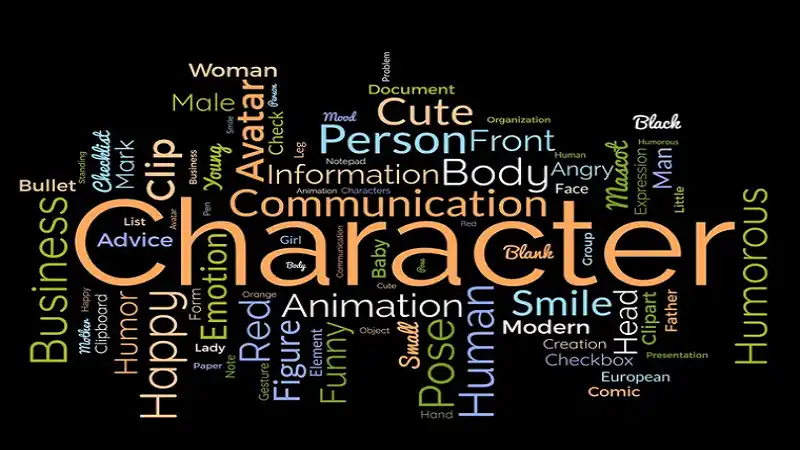In today’s digital age, where communication is more important than ever, effective writing has become a critical skill for individuals and businesses alike. Whether you are drafting emails, creating content for websites, or working on academic papers, the way you convey your ideas matters significantly. One key factor that enhances your writing is the ability to make strong wordtips connections—an often overlooked yet powerful element in crafting well-structured, engaging, and impactful written work.
This article will explore how wordtips connections can elevate your writing and provide practical strategies to improve the flow, clarity, and effectiveness of your content. Let’s dive into why understanding wordtips connections is crucial for successful writing and how you can master them to take your communication skills to the next level.
Understanding Wordtips Connections
The term “wordtips connections” refers to the relationship between words, phrases, and ideas within a sentence or between sentences that create a smooth and coherent flow of information. The concept is rooted in the idea that writing should not only convey information but should do so in a way that is easy to follow and engaging for the reader. These connections are crucial for maintaining the logical progression of thoughts, making sure each idea is properly linked to the next, and ensuring that your writing remains cohesive.
At its core, wordtips connections are designed to guide the reader through your message without confusion. By skillfully connecting your words and ideas, you ensure that the reader can follow your narrative without distraction, allowing the message to resonate more effectively.
Why Wordtips Connections Matter
1. Improved Readability
The primary benefit of using wordtips connections effectively is improved readability. When words and ideas are linked in a way that feels natural, the reader is more likely to engage with your content. Without proper connections, your writing can feel disjointed and hard to follow. This could lead to frustration and ultimately a loss of interest. When the right connections are made, the flow of information becomes smoother, making it easier for the reader to comprehend and retain the content.
2. Enhanced Clarity
In writing, clarity is key. Making wordtips connections allows you to clarify the relationships between different elements in your writing. For example, when you use transitional phrases or words such as “however,” “moreover,” “in addition,” or “conversely,” you provide the reader with cues that help them understand how different ideas relate to each other. These wordtips prevent ambiguity and help maintain the precision of your message.
3. Engagement with the Audience
Good writing isn’t just about getting your point across—it’s about engaging with your audience in a meaningful way. By using appropriate wordtips connections, you can guide the reader through your narrative in a manner that feels conversational and inclusive. When you make use of connectors, conjunctions, and cohesive devices, your writing becomes more dynamic, keeping the reader’s attention and fostering a deeper connection with the content.
4. Better Flow and Transition
One of the most critical aspects of effective writing is ensuring smooth transitions between ideas and paragraphs. Wordtips connections are essential for achieving this fluidity. When you use linking words or phrases, you help the reader transition from one concept to another without feeling abruptly pulled from one thought to the next. This is especially important in long-form content like articles or essays, where maintaining a steady pace is crucial for keeping the reader engaged.
Types of Wordtips Connections
To master wordtips connections, it’s essential to understand the different types of connections you can make in your writing. These connections fall into various categories, each serving a distinct purpose.
1. Additive Connections
Additive connections help you expand on or add to the information you’ve already presented. They include conjunctions, transitional words, and phrases that introduce additional points or details. Common examples include:
- And
- Furthermore
- Moreover
- In addition
- Not only… but also
- As well as
Example:
- “The new marketing strategy increased sales significantly. Moreover, it helped to boost brand awareness across new demographics.”
2. Contrastive Connections
Contrastive connections help you show how two ideas differ from each other or present opposing viewpoints. These connections are important for comparing and contrasting, as well as for presenting balanced arguments. Examples include:
- However
- On the other hand
- Nevertheless
- Conversely
- Yet
Example:
- “The new software is highly efficient in terms of data processing. However, it lacks the user-friendly interface of its competitors.”
3. Causal Connections
Causal connections are used to explain cause-and-effect relationships between ideas. These connections help clarify why something happened or what resulted from a particular action. Some common causal connectors include:
- Because
- Therefore
- As a result
- Consequently
- Due to
Example:
- “The team worked overtime to meet the project deadline. As a result, the project was completed ahead of schedule.”
4. Sequential Connections
Sequential connections guide the reader through a series of steps or ideas in a logical, ordered manner. These connectors are often used in instructional or descriptive writing, where you want to take the reader through a process or timeline. Examples include:
- First
- Next
- Then
- Finally
- Subsequently
Example:
- “First, gather all the necessary ingredients. Next, mix the dry ingredients in a bowl.”
5. Summative Connections
Summative connections are used to summarize or conclude an argument or discussion. They help wrap up the main points and provide the reader with a clear takeaway. Examples include:
- In conclusion
- To summarize
- Overall
- In brief
Example:
- “In conclusion, our research supports the hypothesis that environmental factors contribute to the decline in bee populations.”
How to Effectively Use Wordtips Connections
Now that we’ve established the importance of wordtips connections and explored the different types, let’s dive into practical strategies for using them effectively in your writing.
1. Understand the Purpose of Each Connection
Before using a connector, take a moment to consider its purpose in the sentence. Are you adding information, contrasting two ideas, or showing a cause-and-effect relationship? Using the right type of connection is key to maintaining the clarity and flow of your writing.
2. Avoid Overuse
While wordtips connections are helpful, overusing them can have the opposite effect of what you intend. Using too many connectors can make your writing feel redundant and cluttered. Be strategic with your use of wordtips connections—ensure they serve a purpose and don’t overwhelm the reader.
3. Vary Your Connectors
Don’t rely on the same connectors over and over again. Varying your wordtips connections will help maintain the flow of your writing and keep it from feeling repetitive. Instead of always using “and,” try mixing in alternatives like “furthermore,” “in addition,” or “besides.”
4. Use Transition Words at the Beginning of Paragraphs
One effective way to guide the reader through your writing is to use transition words or phrases at the start of paragraphs. These signals help the reader anticipate the direction of your argument or discussion. For instance, starting a paragraph with “Moreover” or “On the other hand” indicates a shift or an addition to the previous thought.
5. Read Your Writing Aloud
One of the best ways to ensure that your wordtips connections are working as intended is to read your writing aloud. This can help you identify awkward or clunky transitions, and you can adjust them accordingly to improve the overall flow.
The Role of Wordtips Connections in SEO
In the world of digital marketing and content creation, writing is not just about communicating effectively—it’s also about being discovered. Wordtips connections can play a pivotal role in improving your content’s SEO (Search Engine Optimization).
Search engines like Google use algorithms that prioritize content that is well-structured, easy to read, and flows naturally. By using proper wordtips connections, you can enhance the readability and coherence of your content, which in turn can positively impact your SEO ranking. Moreover, clear and cohesive writing encourages users to stay longer on your site, reducing bounce rates and improving your website’s performance in search results.
Conclusion
Mastering the art of wordtips connections is essential for anyone looking to improve their writing. Whether you’re drafting an email, writing a blog post, or working on a business proposal, effective wordtips connections enhance readability, engagement, and clarity. By understanding the different types of connectors and implementing them strategically, you can elevate your writing to a higher level, making it more impactful and accessible for your readers.
As we move further into the digital era, where written communication continues to be a dominant form of interaction, honing your ability to create seamless wordtips connections will be a powerful tool in your writing toolkit. Practice, refine, and experiment with different techniques, and soon enough, your writing will flow effortlessly, capturing the attention of your audience and achieving your communication goals.





